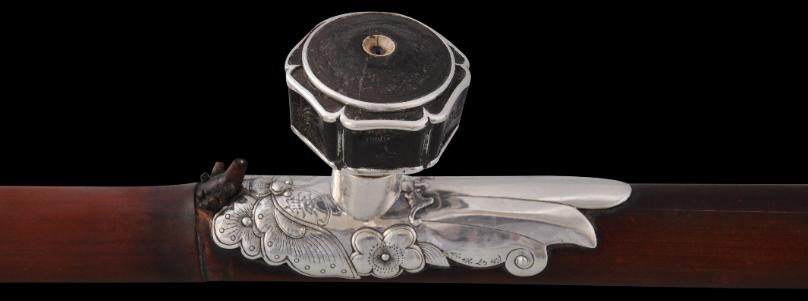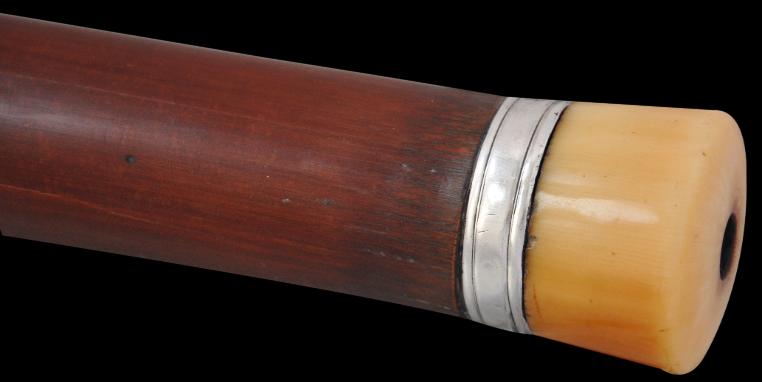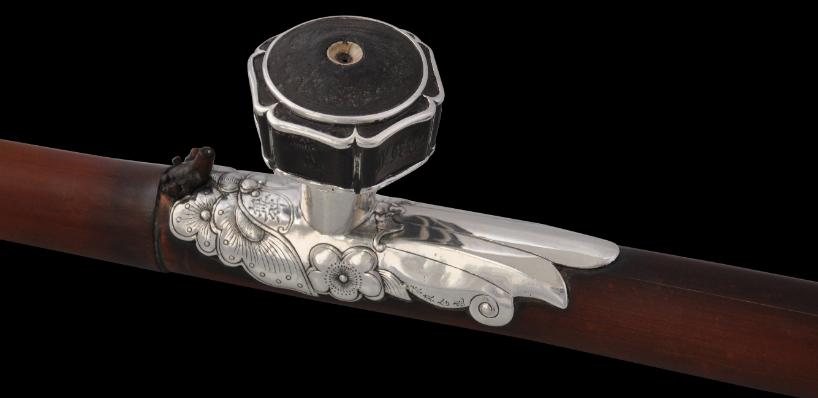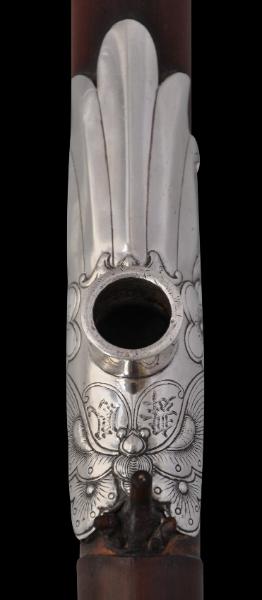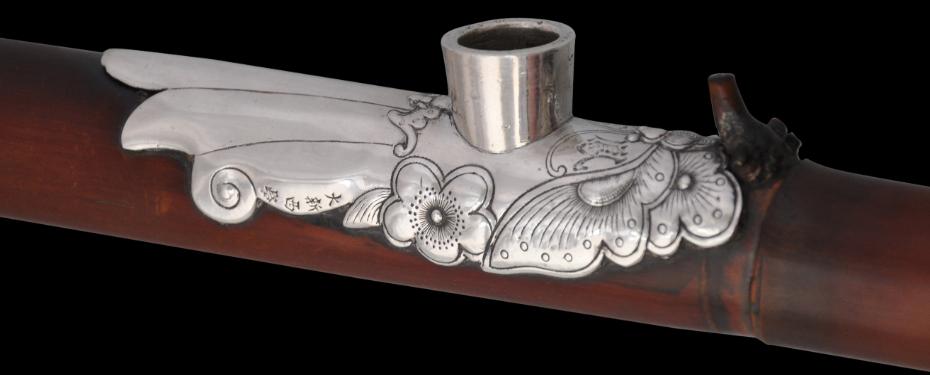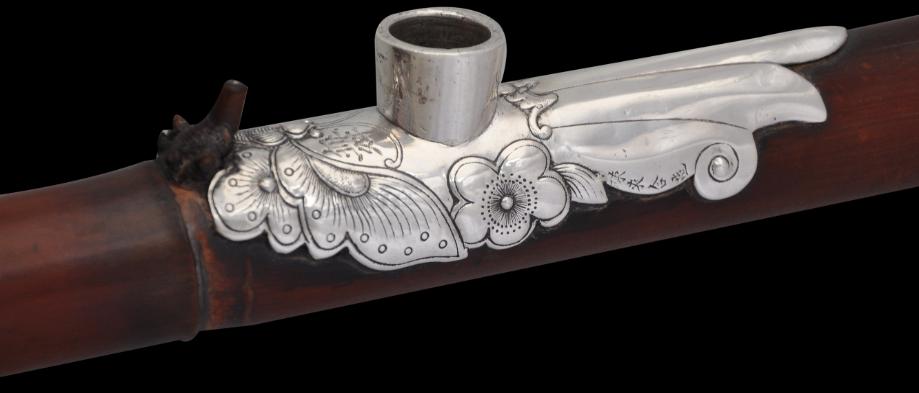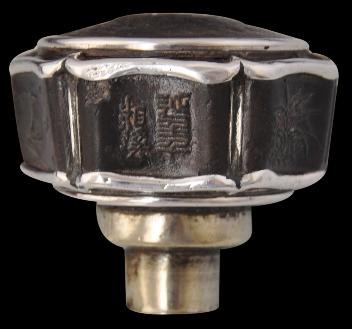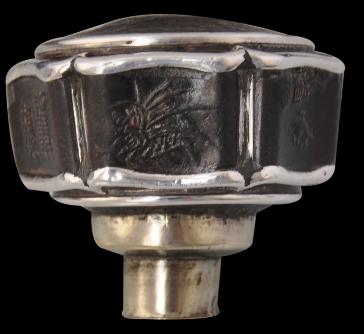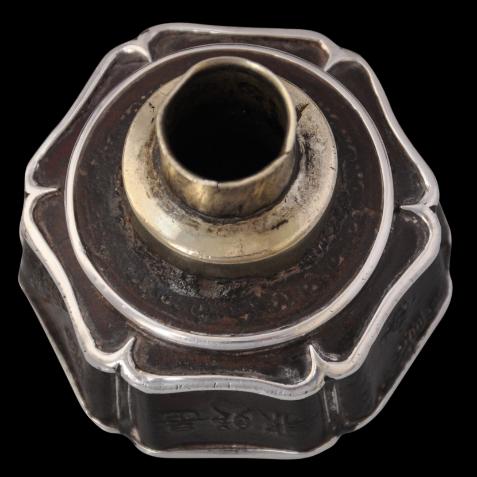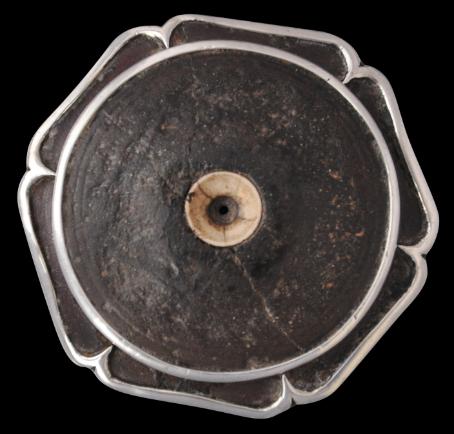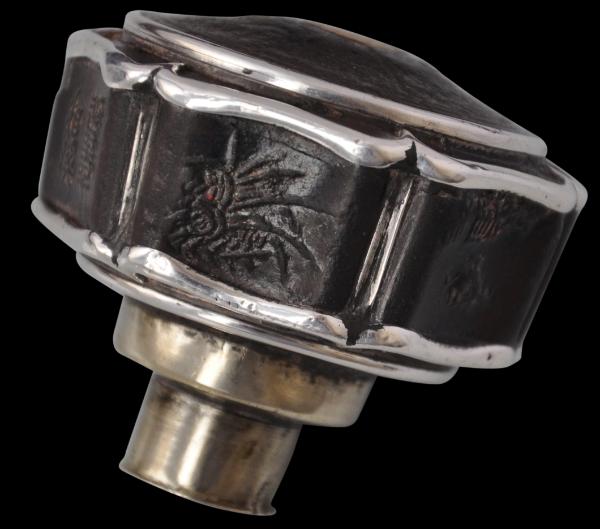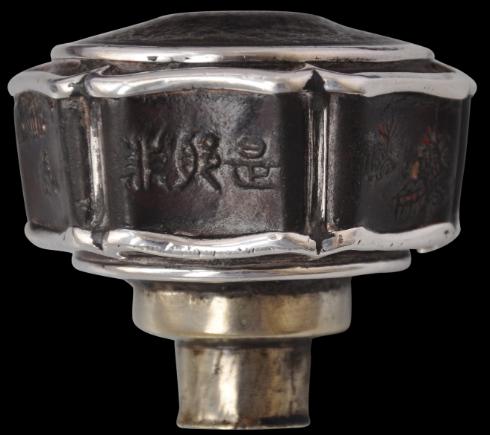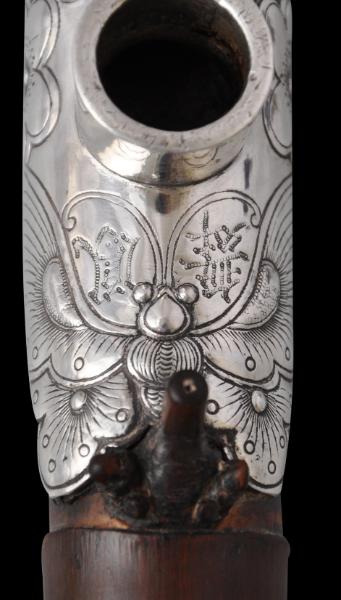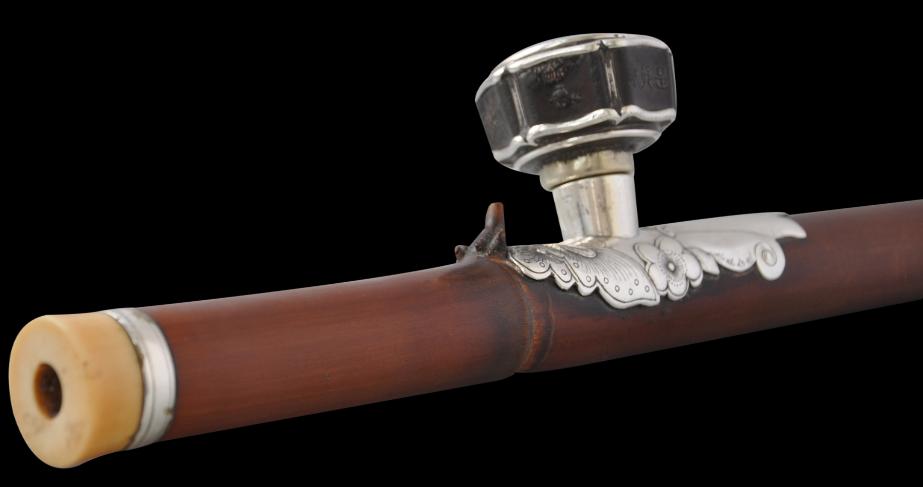
Opium Pipe, Chinese
Opium Bowl & Pipe of Bamboo with Ivory & Silver Mounts
China
19th century
length: 58cm
This elegant and well-proportioned opium pipe and opium bowl comprises a pipe made of a single piece of bamboo with an ivory mouthpiece and end-piece, silver mounts and an engraved silver saddle; and a moulded terracotta opium bowl with silver mounts.
As with most opium pipes made for use, the bamboo segment used comprises one natural segment of bamboo plus a part of the next segment, with the three-pronged subsidiary stem knob left attached at the joint.
The silver saddle is chased with a central butterfly design and plum blossoms. Above the butterfly, in Chinese, is engraved ‘wu feng’ or ‘dancing phoenix’, a typically esoteric inscription for a piece of opium ware. Engraved to one side of the saddle are the maker’s name and location – the words (again in Chinese) ‘Chen Lai He Zhao’, which translates as ‘made by Chen Lai He’ and on the other, ‘Da Xin Xi Lu’, or ‘Da Xin, West Road.’
The terracotta opium bowl is in the form of a plum blossom head with silver mounts and a silver collar. The sides of the bowl have in relief stylised Chinese characters and other designs. The bowl has a small well to the top in which the opium block was placed.
Whilst opium pipes and bowls were made from a variety of materials, the mixture of materials used to make this set – bamboo, ivory, silver and terracotta – was considered the most ideal by opium users (Lee, 2006.) A well-seasoned bamboo pipe was felt to greatly enhance the flavour of the opium vapour and also its potency.
The stem of the bowl sits in the socket of the saddle but was kept tightly in by winding a small amount of moistened cloth around the stem, thereby creating an airtight seal.
Most opium pipes available today are reproduction pieces – it is rare now for genuine examples to appear on the market. The patina of this example, the quality of the materials used in its manufacture, and its resinous interior attest to its age and past use.
There is some slight age-related surface splitting to the bamboo, but other than that the condition is excellent, with the pipe, ivory fittings, and bowl all having an excellent patina. There are no repairs, chips to the ivory or losses or dents to the silver.
Overall, this is one of the best examples of a Chinese opium pipe that we have seen.
Provenance
UK art market
References
Lee, P., Opium Culture: The Art & Ritual of the Chinese Tradition, Park Street Press, 2006.
Martin, S.,
The Art of Opium Antiques, Silkworm Books, 2007.
Inventory no.: 1451
SOLD



